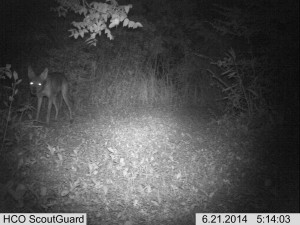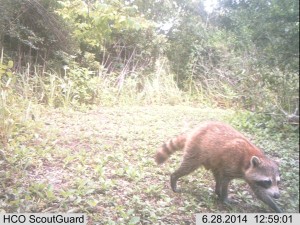A friend of mine  recently returned from a year of field work in the Southwest- she’s investigating how carnivore species respond to each other and different levels of human activity in an arid environment. Some of the pictures from her camera traps make me completely jealous- she’s dealing with mountain lions and badgers and ringtails, a whole slew of species in a wide range of sizes; in comparison, the carnivores at my field sites are generally coyotes and raccoons, raccoons and coyotes, with the occasional mink or otter thrown in, and my largest carnivore is smaller than the dog waiting to welcome me home each evening.
recently returned from a year of field work in the Southwest- she’s investigating how carnivore species respond to each other and different levels of human activity in an arid environment. Some of the pictures from her camera traps make me completely jealous- she’s dealing with mountain lions and badgers and ringtails, a whole slew of species in a wide range of sizes; in comparison, the carnivores at my field sites are generally coyotes and raccoons, raccoons and coyotes, with the occasional mink or otter thrown in, and my largest carnivore is smaller than the dog waiting to welcome me home each evening.
I was thinking about the differences between our study areas- one very dry and the other pretty wet most of the time, one with large areas of undeveloped land and the other ringed by agriculture and the petroleum industry- and I started wondering whether southern Louisiana could support the larger carnivores she had wandering around her sites. Do we have the space and food resources? And what kind of accommodations would human society have to make to these larger predators?
Predator control and reintroduction are important, and controversial, topics in ecology, whether we are talking about wolves in Yellowstone, leopards killing cattle in Africa, or whether or not mountain lions are present in New England. I don’t know how well either of those strategies works, nor do I have a good sense of what it means to be a large carnivore living in a human world, aside from the impression that it’s pretty tough going at times.
So this month I’m going to focus on large carnivore research, specifically the aspects of their ecology that at most at odds with the modern, developed human landscape I see around me, and whether coexistence is a feasible option. I expect there will be some strong and different opinions on these topics, and I imagine that some situations can’t be win-win, but there are probably more possibilities than we think for supporting those species at the top of the food chain.

